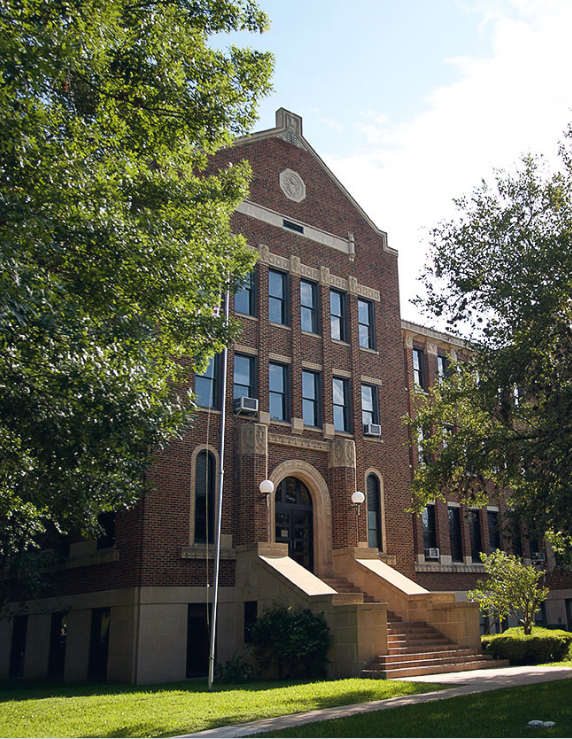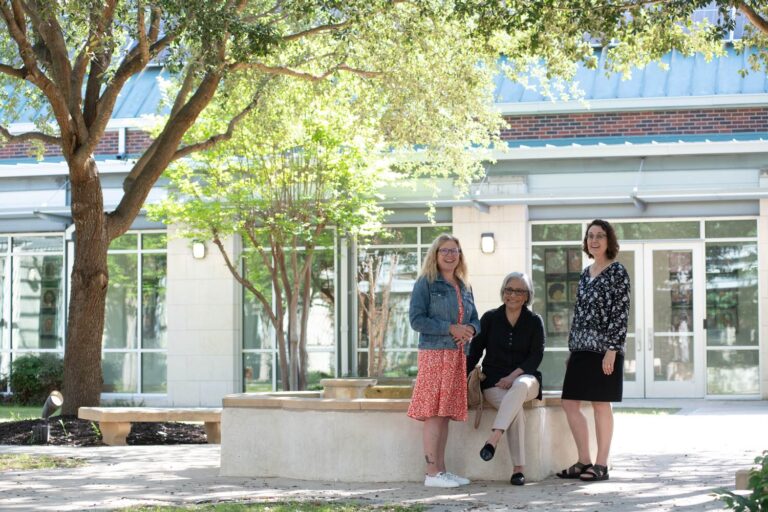Photo: Jeff Geerling
“The core of this ethos is not merely the imitation of Christ but a radical, mystical participation in the divine energy unleashed in the Incarnation, Passion and Resurrection of Jesus… It insists on a profound interior conformity to Christ conjoined to lives of apostolic service. – Dr. Wendy M. Wright”
The French Wars of Religion and the French Revolution created civil chaos in 17th- to- 19th-century France, but they also sowed the seeds for active periods of a spiritual renewal that still influence Catholicism today even far beyond the borders of France.
That spiritual renewal included the founding in 1816 of the Missionary Oblates of Mary Immaculate by St. Eugene de Mazenod in Aix-en-Provence, in southern France. This year as Oblates worldwide celebrate their bicentennial, Oblate School of Theology’s Institute for the Study of Contemporary Spirituality sponsored a two-day conference titled “Surrender to Christ for Mission: French Spiritual Traditions.” It attracted nearly 150 people to Oblate School of Theology Nov. 16-17.
Dr. Wendy Wright, professor of theology at Creighton University in Omaha, Neb., gave the opening keynote address on the legacy of French spiritual traditions. Father Ronald Witherup, superior general of the Paris-based Society of St. Sulpice, delivered a keynote address on the relevance of French spirituality today.
The civil upheavals led to an astonishing windfall, giving birth to some of the most vibrant and innovative religious communities and enduring Catholic spiritual traditions. Those periods became known as the “golden ages of French mysticism,” “the century of saints” or “the great century of the soul,” Dr. Wright explained.
Madame Barbe Acarie in Paris brought together Abbe Pierre de Bérulle, the Capuchin Benoit de Canfield, the Jesuit Pierre Coton, St. Vincent de Paul and St. Francis de Sales. As the fervor spread, Father Jean-Jacques Olier founded the Society of the Priests of St. Sulpice; John Eudes forged a network of communities to renew the clerical state, serve the disenfranchised and reinvigorate French Catholic life; and Acarie arranged for the reformed Teresian Carmel to be imported to France and entered it. Jean Baptist de la Salle started a community of consecrated laymen to train teachers; Jeanne Chezard de Mate founded the Sisters of Charity of the Incarnate Word; St. Vincent de Paul established the Vincentian order and the Confraternities of Charity to share in Christ’s labor by serving the poor and encouraging the redistribution of wealth. With him, Louise de Marillac founded the Daughters of Charity to minister to those in gravest need through direct service.
“The mystical impulse…moved out of the cloister into the street, invading the salons of nobles, households of the married and the hovels of the poor. It animated women and men, clergy, vowed religious and laity to collaborate together” and forged “a radical Christocentric spirituality – a mysticism, really” – hidden beneath a life of action and linked to a missionary zeal directed toward the least and the forgotten, Dr. Wright stated.
De Sales’ spirituality was framed in the language of the heart, Dr. Wright said. The medieval concept of “the exchange of hearts” was popularized in the lives of such saints as Catherine of Siena. In de Sales’ spirituality, it became the goal of all Christians.
“The core of this ethos is not merely the imitation of Christ but a radical, mystical participation in the divine energy unleashed in the Incarnation, Passion and Resurrection of Jesus,” the professor explained. “It insists on a profound interior conformity to Christ conjoined to lives of apostolic service.”
De Paul saw the poor as privileged mediators of salvation. “Disfigured by deprivation, they are children of God in the eyes of faith – hidden, living images of Jesus’ life and death,” he wrote. He encouraged openness to the faces of poverty and living the paradox that to live in Jesus, one must consent to die in Christ.
The French Revolution generated spiritual luminaries and communities formed for evangelization and mission to the poor, the uncatechized and those of no faith. St. Eugene de Mazenod set out to form men open to answer any call. They moved from village to village preaching, instructing people in the language of the common people and sharing an intense community life of prayer, study and fellowship.
Jean-Martin Moye founded the Sisters of Divine Providence to catechize poor girls, relying on their faith in Divine Providence to supply their needs. St. William Joseph Chaminade founded the Society of Mary, embracing the French school’s focus on Mary as the exemplar of the human person. They were animated by the belief that Mary’s apostolic mission is to form all persons into the most perfect conformity with Christ.
Father Witherup said the French school originated in a particular context – a movement of religious leaders interested in reforming the Church, and part of a reform movement arising from the Council of Trent. “Despite excesses and the sad legacy of division in the Church,” Witherup said, “Martin Luther’s main point was not entirely misdirected. The condition of clergy was abysmal; the Church was largely in disarray and had lost sight of many key aspects of the Gospel message.” Today’s Church is in similar circumstances. Fifty years after the Second Vatican Council, Church reform is again a major preoccupation. “It often takes the Church a century or more after a major council to find her solid footing,” he said.
The French school encouraged a pastoral orientation that was not weak on doctrine. Its writings are full of profound reflection on basic Christian truths. Its leaders read the Scriptures, the Church Fathers and medieval theologians with insight and wrestled to explain elements of faith in the controversial context of the Protestant Reformation. “They wanted the faith to be properly understood by the faithful, and thus wanted priests properly trained to explain it in understandable terms,” but they equally esteemed the baptismal identity of every Christian. “For Olier, baptism makes each and every Christian an alter Christus – another Christ…This begins at baptism and is not reserved for the ordained; every Christian is called to this dignity,” Witherup said. Vatican II addressed the universal call to holiness and the shared baptismal identity of each Christian who “is called to become like Christ in what we think, say and do.”
The French school balanced a deep love for the sacraments with a strong devotion to the Bible at a time when some in the Church tended to overemphasize sacraments as a way to define the Church in opposition to Protestants’ emphasis on Scripture.
The priest said that Father Olier, alluding to a passage from St. Augustine, spoke of each syllable of Scripture as comparable to each particle of the sacred Host at Eucharist, since both communicate the divine real presence.
Male leaders of the French school also worked closely with women, who in many cases were influential in guiding the missions of religious congregations. De Paul worked with Louise de Marillac, John Eudes with Marguerite de Saint-Sacrement, and de Sales with Jane de Chantal. Father Olier was influenced and strengthened in his vision of Church reform by Marie Rousseau, Agnes de Langeac and Mere de Bressand.
The most important feminine dimension was the well-developed devotion to the Blessed Virgin Mary. Bérulle and other leaders deepened this devotion in their writings and were expanded in the spiritual thought of St. Louis de Montfort and St. Eugene de Mazenod.
Olier alluded to Eucharistic imagery comparing Mary holding Jesus in her womb with the tabernacle where Jesus dwells to be adored. Olier reflected deeply on the mystery of Mary’s role in the history of salvation, including her Immaculate Conception, her role in the Incarnation and even in her presence with John at the foot of the cross – an image for Olier of the birth of the new community of faith, the Church.
J. Michael Parker



